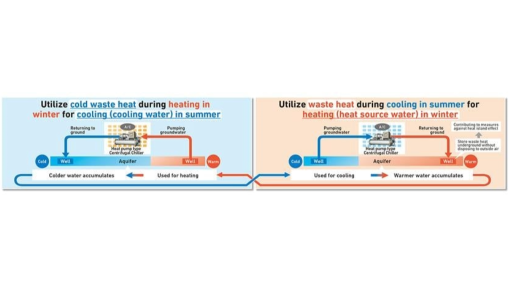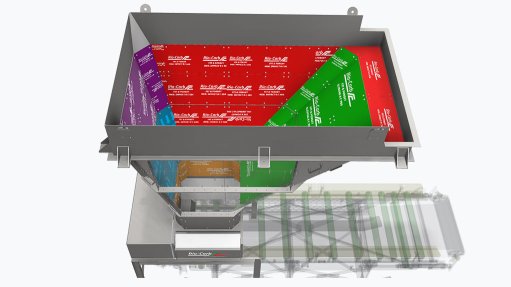Opinion: We need more than plans to achieve a just energy transition
In this article, Tutwa Consulting Group Just Energy Transition Programme senior associate engineer Stuart Reneke and economist Danae Govender write that South Africa needs a comprehensive monitoring system to ensure it is able to achieve a just energy transition.
It’s hard to find fault with government’s ability to formulate plans. Most recently it has shed light on what to do about the persistent loadshedding that is a drag on economic growth and literally makes prospects for improving the lot of South African society and business gloomy. The plans are promising. What is missing is a comprehensive monitoring system.
The national State of Disaster announced in the State of the Nation address was the latest plan, among many the new electricity minister will be expected to oversee. It pledged support measures for business, to exempt critical infrastructure from being cut off, and most importantly for the longer term, to accelerate energy projects, including those that involve renewable energy. Renewable energy projects promise not only to end – or at least lighten the burden – of loadshedding they are also essential in achieving the Just Energy Transition (JET), the country’s move from over-reliance on coal-fired power stations to greener forms of energy.
In July 2022, the Presidency released a five-intervention action plan to “confront the energy crisis”, with “Intervention 3” being “Accelerate procurement of new capacity from renewables, gas and battery storage”.
According to the plan, Intervention 3 entailed, among others, announcing the list of preferred bidders for Bid Window 6 (BW 6) in October 2022 and reaching financial close in early 2023. It also committed to increasing the capacity procured, in BW6, to 5 200 MW (later revised down to 4 200 MW) – the equivalent of the capacity of one of Eskom’s bigger coal-fired power stations – and bringing forward the release of further bid windows.
This five-point plan has been followed by the Energy Action Plan released in January 2023, which contains a Roadmap To End Load Shedding, showing the various sources of generation capacity till 2024 and beyond.
Some of the steps needed to end load shedding have been implemented, such as reducing local content requirements for solar panels and finalising requests for proposals for battery storage. But the Renewable Energy Independent Power Producer Procurement Programme (REIPPPP) continues to face setbacks. The list of preferred bidders for BW6 was released in December 2022, securing an unimpressive 860 MW capacity. Moreover, due to delays in this round and previous rounds, limited grid capacity, and commercial close taking up to six months, the release of further bid windows is unlikely to be brought forward, as envisaged by the plan.
Delays in the independent power producer (IPP) process are commonplace. For BW 5, the list of preferred bidders was released in October 2021 with signing off on the projects only concluded at the end of 2022 – well beyond the originally anticipated deadline of April. While some delays are not due to lack of effort from government, most are. With South Africa’s need to improve electricity supply, uphold commitments to climate agreements, and reduce coal usage to avoid punitive tariffs on exports deemed reliant on coal, to the European Union (and current and potential future funders), delays are disastrous.
Moreover, beyond the IPP Office’s records, the absence is glaring of a visible tracking, monitoring, reporting, and forecasting mechanism. This is a key component in transforming a century-old electricity infrastructure in a strict and ambitious timeframe.
Such a mechanism would have enabled agility in adapting to changing contexts, and the lack thereof has surely contributed to South Africa’s renewable energy rollout falling behind.
The Just Energy Transition Investment Plan draft report (currently undergoing consultation with various stakeholders) does mention a Monitoring and Evaluation Framework, scheduled to kick off this month, and a Results Monitoring System. However, at the time of reporting, it is thought that this will only provide a static view of the JET programme.
The well-known problems of Eskom electricity supply and the need to meet the Nationally Determined Contribution, the country’s commitment to reduce national carbon emissions to combat climate change, mean it is likely that the updated Integrated Resource Plan 2023 will have more ambitious targets for securing energy supply from renewables. However, should the rollout of the related projects continue to be delayed, an energy transition will take far longer than anticipated.
The consequences would be dire. The South African Reserve Bank predicts more than 200 days of load shedding for 2023 at a cost of up to R1-billion a day, not to mention costs of the pending carbon border tax, and the possibility of falling out of favour with international partners. For this, it is imperative that the key roleplayers are empowered to act with agility, dynamism and flexibility – features which are, seemingly, missing from REIPPPP and JET processes – when faced with bottlenecks and constraints.
In the anxieties over the effects of load shedding and the focus on the “Energy Transition” component of the JET, ambiguities surrounding the “Just” aspect of the JET persist, though continuing reliance on coal to power the country will relieve some pressure for a while. Although government and Eskom have provided assurances that “no one will be left behind” and that the JET will realise a “net gain” of 300 000 jobs, hard evidence to support these claims has not been provided. Although “workers and communities in vulnerable industries” are supposedly prioritised in the JET, the definition of potentially affected parties is too narrow as it may not encompass all those that form the coal-fired electricity value chain as well as those that operate on its periphery.
In response to the lack of width in the definition of affected parties, questions from organised labour and civil society are likely to include: Do workers only refer to full-time employees of Eskom and the contracted coal mines? Are contractors (full-time, part-time or project related) also included? How is the informal sector catered for? How are the suppliers of required goods and services catered for? The message from organised labour and civil society to those in power and responsible for JET needs to be clear: nothing about us without us.
As in the case of the Energy Transition portion of the JET, a mechanism is needed to track, report, and respond to the Just component. South Africa’s official unemployment rate was sitting at 32.9% in the third quarter of 2022. With the bleak prospects for economic growth in mind, it is crucial that no livelihood be put at further risk. JET-related job losses and gains must be carefully tracked to ensure that, indeed, nobody is left behind. This is particularly true within the context of an accelerated renewable energy rollout, which could be accompanied by an accelerated loss of jobs in the coal-fired electricity value-chain.
Unless a rigorous monitoring mechanism, independent of government – which does not, after all, have a vested interest in being judged on its success or failure – is established, the nation will be left in the dark, metaphorically, about the implementation of all the wonderful plans.
Comments
Press Office
Announcements
What's On
Subscribe to improve your user experience...
Option 1 (equivalent of R125 a month):
Receive a weekly copy of Creamer Media's Engineering News & Mining Weekly magazine
(print copy for those in South Africa and e-magazine for those outside of South Africa)
Receive daily email newsletters
Access to full search results
Access archive of magazine back copies
Access to Projects in Progress
Access to ONE Research Report of your choice in PDF format
Option 2 (equivalent of R375 a month):
All benefits from Option 1
PLUS
Access to Creamer Media's Research Channel Africa for ALL Research Reports, in PDF format, on various industrial and mining sectors
including Electricity; Water; Energy Transition; Hydrogen; Roads, Rail and Ports; Coal; Gold; Platinum; Battery Metals; etc.
Already a subscriber?
Forgotten your password?
Receive weekly copy of Creamer Media's Engineering News & Mining Weekly magazine (print copy for those in South Africa and e-magazine for those outside of South Africa)
➕
Recieve daily email newsletters
➕
Access to full search results
➕
Access archive of magazine back copies
➕
Access to Projects in Progress
➕
Access to ONE Research Report of your choice in PDF format
RESEARCH CHANNEL AFRICA
R4500 (equivalent of R375 a month)
SUBSCRIBEAll benefits from Option 1
➕
Access to Creamer Media's Research Channel Africa for ALL Research Reports on various industrial and mining sectors, in PDF format, including on:
Electricity
➕
Water
➕
Energy Transition
➕
Hydrogen
➕
Roads, Rail and Ports
➕
Coal
➕
Gold
➕
Platinum
➕
Battery Metals
➕
etc.
Receive all benefits from Option 1 or Option 2 delivered to numerous people at your company
➕
Multiple User names and Passwords for simultaneous log-ins
➕
Intranet integration access to all in your organisation























